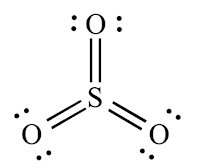
The formal charge on O, which forms a double bond with N atom = 6 −12(4) − 4 = 0 The formal charge on F = 7 −12(2) − 6 = 0 The formal charge on N = 5 −12(8) − 0 = 1 Hence, there is a need to estimate the formal charge on every atom in the molecule.įormal charge = valence electrons − 1/2(bonding electrons) − nonbonding electrons Now, every atom has eight electrons but nitrogen can form only three bonds owing to the absence of d-orbitals. There will be two resonance structures of nitryl fluoride as any oxygen atom can share its electron pair. The Lewis structure of NO2F in the bond notation form would be: The Lewis dot structure or electron dot structure of the nitryl fluoride would be: The oxygen atom will share its electrons instead of the fluorine atom as it is less electronegative than the fluorine atom.

To complete its octet, let us move two valance electrons (lone pair) from the oxygen atom to form a double bond or share four electrons with the nitrogen atom. Here, oxygen and fluorine atoms have eight electrons in their valance shell but the nitrogen atom has only six electrons.

The 24 valence electrons can be arranged like the following diagram: Therefore, these three elements tend to achieve neon gas configuration on bonding. The octet rule tells us that every atom tends to achieve the nearest noble gas configuration i.e., eight electrons in the valence shell of the atom. Here, we need to understand the octet rule. Now, the next step would be to place the valence electrons around the nitrogen atom in the nitryl fluoride. It gives us a clear indication that the nitrogen atom is a central atom and oxygen and fluorine atoms will surround it. So, the increasing order of electronegativity of three elements is N < O < F. Generally, the least electronegative element acts as a central atom.Īs we know that electronegativity increases across the period. It will help in drawing the Lewis structure. The second step consists of finding out the central atom of the molecule. Hence, NO2F molecule consists of 5 + (2*6) + 7 = 24 valence electrons. Therefore, Nitrogen, oxygen, and fluorine atoms have 5, 6, and 7 valence electrons, respectively. The nitrogen, oxygen, and fluorine atoms belong to group 15, group 16, and group 17 of the modern periodic table, respectively. The first step would be to compute the total number of valence electrons in the nitryl fluoride. The nitryl fluoride consists of one nitrogen atom, one fluorine, and two oxygen atoms. The valance electrons are the electrons that are present in the outermost shell of the atom and prone to form chemical bonds. The Lewis structure is based on the concept of valence electrons. The Drawing of the Lewis structure involves step by step procedure for the two-dimensional representation of the molecule. We need to depict the Lewis structure of nitryl fluoride to understand the nature of chemical bonding in it.


 0 kommentar(er)
0 kommentar(er)
